If you’re looking to add some life and color to your home, houseplants are an excellent choice. Not only do they beautify your space, but they also improve air quality and create a calming atmosphere.
Here is a table highlighting some popular houseplants that can enliven your home and enhance air quality:
| Plant Name | Benefits | Light Requirements |
|---|---|---|
| Spider Plant | Air purifying, easy care | Bright, indirect light |
| Pothos | Removes toxins, adaptable | Low to bright light |
| Peace Lily | Improves air quality | Low to medium light |
| Snake Plant | Releases oxygen at night | Low to bright light |
| Rubber Plant | Air purifying, attractive leaves | Bright, indirect light |
| Aloe Vera | Soothing gel, air purifier | Bright, indirect light |
With so many varieties available, choosing the right ones can feel overwhelming. Whether you have a sunny windowsill or a cozy corner with low light, there are unique plants that can thrive in your environment.
In this blog post, we’ll explore some charming houseplants that can brighten up any room while being easy to care for.
1. Peace Lily
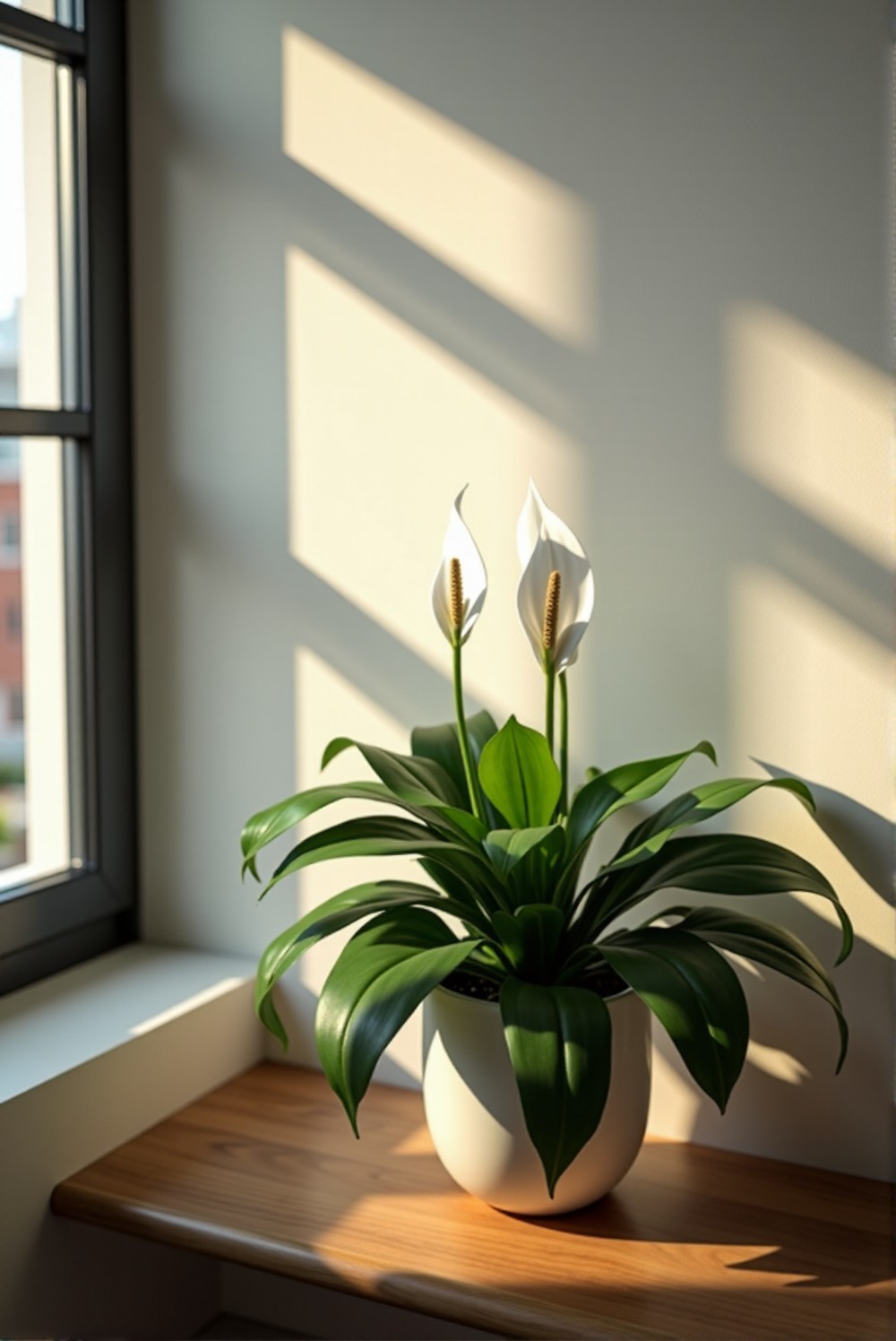
The Peace Lily is known for its beautiful, glossy leaves and stunning white blooms. This plant can thrive in low light conditions, making it a favorite for homes and offices.
It enjoys a warm and humid environment, so it’s perfect for bathrooms or kitchens. Just keep the soil moist, and it will flourish.
This table provides an overview of the ideal conditions for a plant that thrives in warm and humid environments, such as those found in bathrooms or kitchens.
| Condition | Ideal Level |
|---|---|
| Temperature | Warm (around 70-80F) |
| Humidity | High (above 50%) |
| Soil Moisture | Moist (not soggy) |
| Light | Bright, indirect light |
| Fertilization | Monthly during growing season |
| Pest Control | Regular checks for common pests |
When it flowers, the white spathes resemble elegant sails, creating a lovely contrast against the deep green foliage.
Another great aspect of the Peace Lily is how well it cleans the air.
The Peace Lily is not only a beautiful addition to any home or office space, but it also brings numerous benefits that enhance indoor environments. Here are some key points about this remarkable plant:
- The white spathes bloom periodically, providing a stunning visual display throughout the year.
- Peace Lilies are known for their ability to thrive in low light conditions, making them ideal for indoor spaces.
- They are effective at removing pollutants such as formaldehyde, benzene, and carbon monoxide from the air.
- These plants require minimal maintenance, needing only occasional watering and a little fertilizer.
- In addition to their air-purifying properties, Peace Lilies can increase humidity levels, promoting better respiratory health.
It can filter out harmful toxins, improving the air quality in your space. This makes it not only a decorative choice but a smart one for health as well.
Remember to keep it away from direct sunlight, as too much light can damage its leaves.
To care for this plant, water it when the top inch of soil feels dry.
If it’s not getting enough water, the leaves will droop, letting you know it’s thirsty. With a bit of attention, your Peace Lily will reward you with beautiful blooms and vibrant greenery year-round.
2. Snake Plant
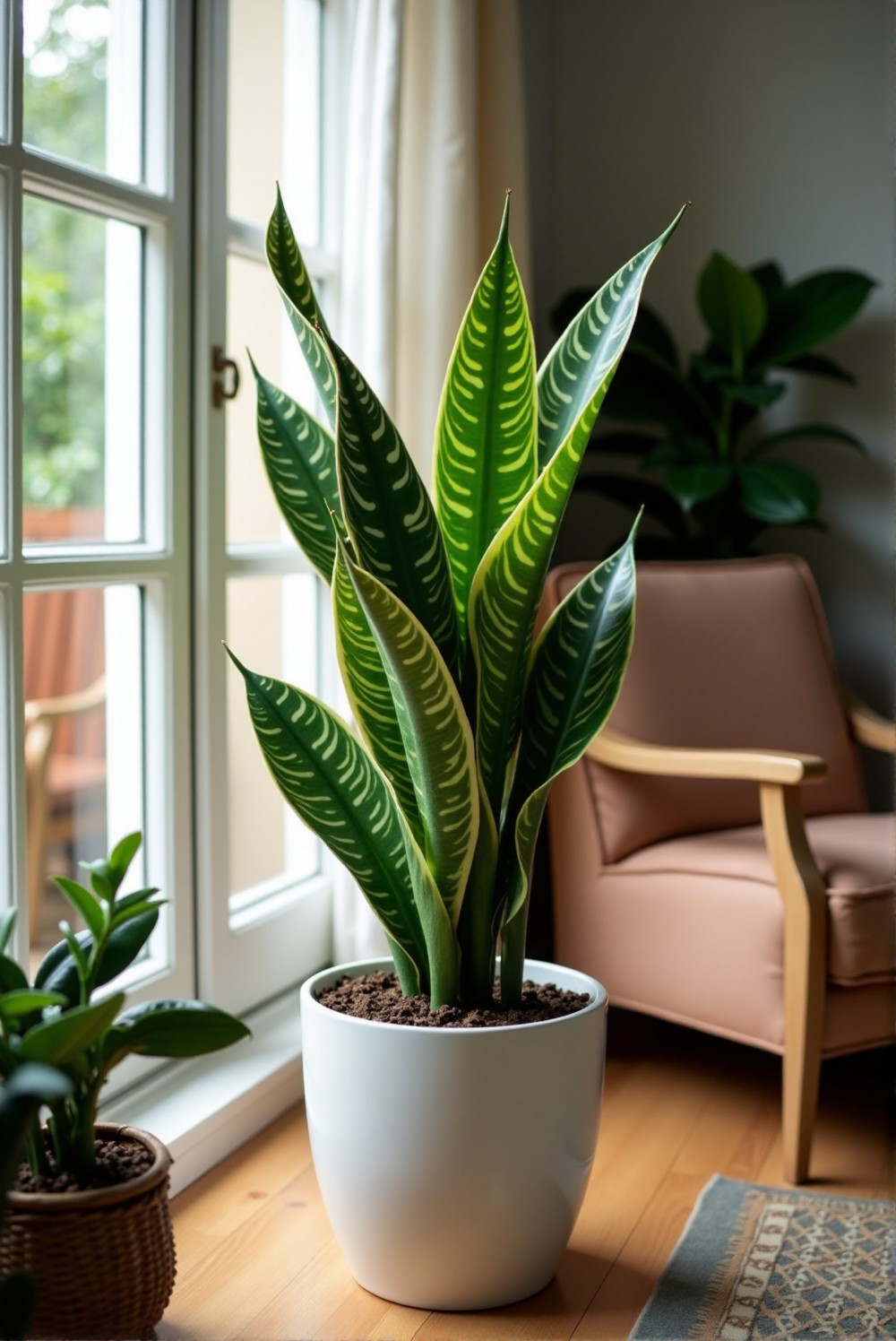
The Snake Plant, also known as Sansevieria, is a popular choice for indoor gardening. Its tall, stiff leaves come in a variety of shades of green, often adorned with striking yellow or white edges.
This plant is not only beautiful but incredibly tough, making it a great option for beginners. It can survive in a wide range of lighting conditions, from low light to bright, indirect sunlight.
This hardy plant is very forgiving when it comes to watering. In fact, it prefers to dry out between waterings.
Overwatering can lead to root rot, so it’s best to let the soil become dry before giving it a drink. During the warmer months, a little fertilizer once in a while can help boost its growth.
One of the most fascinating features of the Snake Plant is its air-purifying capabilities. It is known to filter toxins from the air, improving indoor air quality.
Unlike many plants, it can even produce oxygen at night, making it a perfect addition to bedrooms.
While the Snake Plant is low-maintenance, it can still be susceptible to pests like spider mites and mealybugs.
Regularly checking your plant will help keep it healthy and thriving. It’s also important to keep the leaves clean, as dust can accumulate and block sunlight.
Whether you place it in your living room, office, or bedroom, it’s sure to bring a touch of nature indoors.
3. Pothos

Pothos, also known as Devil’s Ivy, is one of the easiest houseplants to care for. Its heart-shaped leaves come in shades of green, yellow, and white, making it a vibrant addition to any room.
This plant is perfect for beginners because it can thrive in a variety of lighting conditions, from low light to bright, indirect sunlight.
One of the reasons Pothos is so popular is its growth habit.
It can trail beautifully from hanging baskets or climb up a trellis, adding dimension and beauty to your space. Depending on the environment, it can grow quite long, allowing for a lush display.
Watering is simple; just check the soil. When the top inch feels dry, it’s time to give it a drink.
Be careful not to overwater, as this can lead to root rot. Fertilizing once a month during the growing season will help keep your Pothos healthy and encourage growth.
Besides being easy to care for, Pothos has air-purifying qualities. It helps remove harmful toxins from the air, which can create a healthier indoor environment.
Regularly dusting the leaves will help it capture more pollutants and look its best.
This versatile plant can be placed in different areas of your home, from your living room to your office.
With its striking appearance and low maintenance, it’s easy to see why Pothos remains a favorite for houseplant lovers.
4. Spider Plant

The Spider Plant is a lovely choice for any home. With its long, arching leaves, it brings a sense of vibrancy and life to your space.
They prefer bright, indirect light but can adapt to lower light conditions too. This makes them easy to place in various rooms.
These plants are versatile and can thrive in different environments, making them a valuable addition to any space. Here are some key points about their light requirements:
- Bright, indirect light enhances their growth and foliage color.
- Lower light conditions will not harm the plants, allowing for flexibility in placement.
- Ideal for homes, offices, and indoor gardens due to their adaptable nature.
- Can benefit from occasional direct sunlight for a short duration.
- Observe the plant’s response to light and adjust placement as needed for optimal health.
One of the most charming features of the Spider Plant is its “babies,” which are small plantlets that grow from the mother plant. These can be easily propagated in soil or water, giving you more plants to enjoy or share with friends.
Watering is straightforward; check the soil and give it a drink when the top inch feels dry. Avoid letting the plant sit in water, as this can cause issues with root rot.
Spider Plants also excel at cleaning the air. They are known to remove toxins, contributing to a healthier living environment.
This plant is also safe for pets, making it a great choice for families with furry friends.
With minimal care and a stunning appearance, the Spider Plant can become a star in your home.
It adds a touch of nature while being easy to care for, perfect for both beginner and experienced plant lovers.
5. ZZ Plant
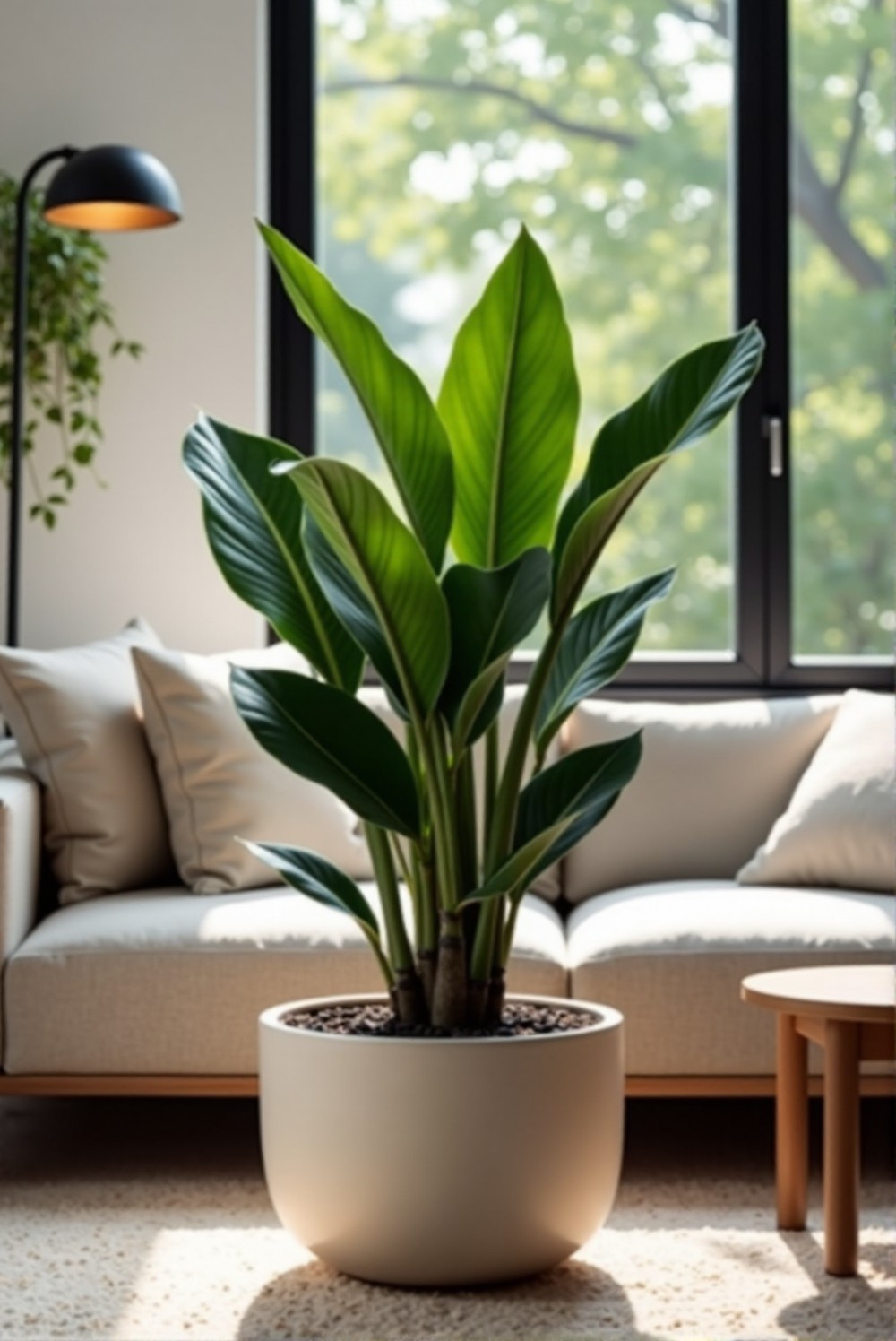
The ZZ Plant is truly a gem for anyone looking to add a touch of green to their home. Known for its shiny, thick leaves, this plant stands out in any collection.
It thrives in low light and is perfect for places that don’t get a lot of sunlight, making it an excellent choice for offices or darker rooms.
This plant doesn’t need much water, which makes it great for busy people.
Just let the soil dry out completely between watering. Overwatering can be harmful, so it’s better to under-water than over-water the ZZ Plant.
It also tolerates a range of temperatures, which adds to its appeal.
The ZZ Plant’s robust nature means it can survive even if you sometimes forget to care for it.
This resilience makes it a favorite among those who might not have a green thumb. Plus, it can help purify the air by filtering out toxins, creating a healthier environment.
Its unique shape and vibrant green leaves can brighten up any space effortlessly.
6. Parlor Palm
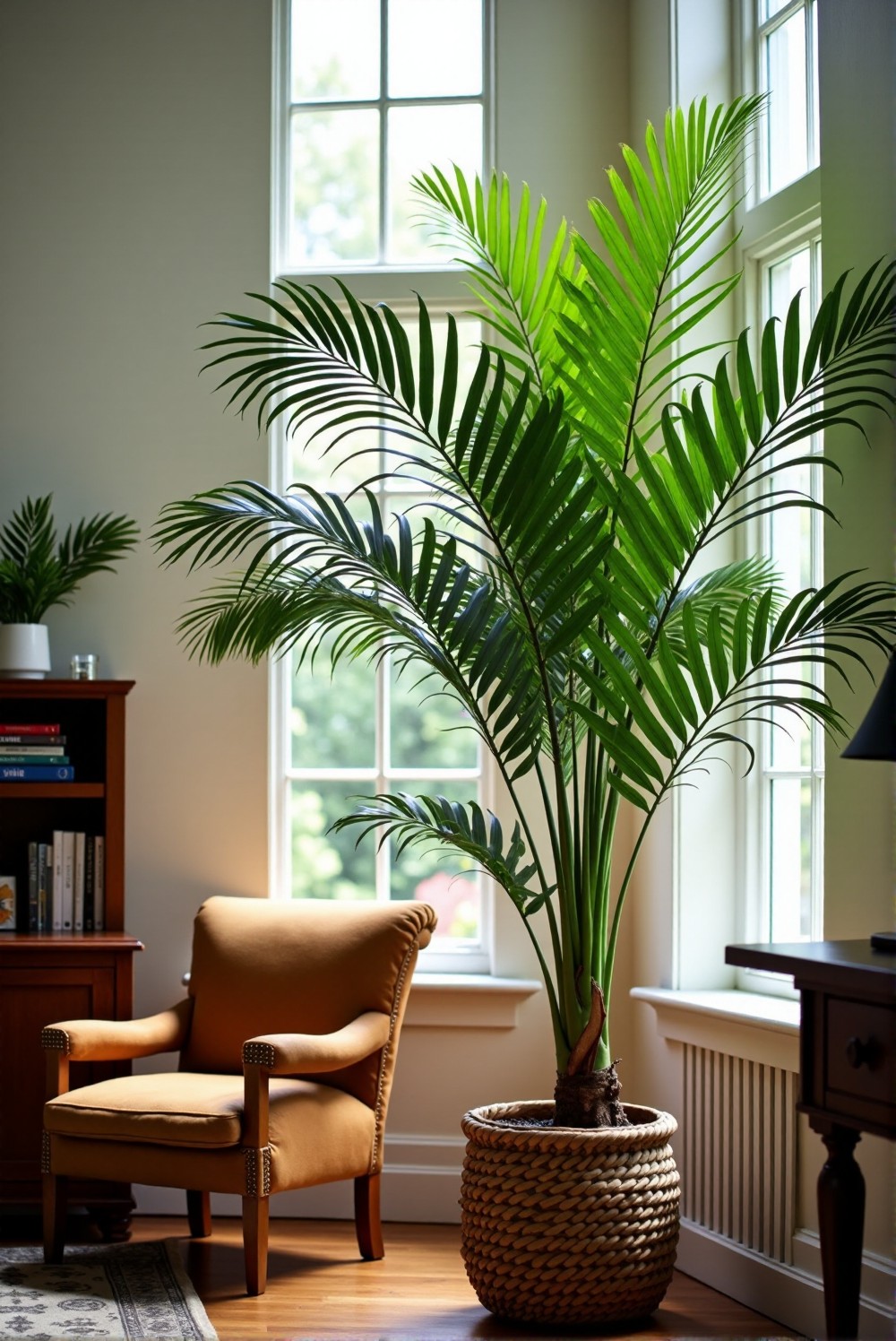
The Parlor Palm is an elegant houseplant that can brighten any room. Its long, feathery fronds bring a touch of tropical beauty, making it a popular choice for homes and offices alike.
This plant thrives in low light, so it can be placed in various spots without worrying about too much sunshine.
Care for a Parlor Palm is straightforward.
It prefers moist but well-drained soil. It is important to water only when the top inch of the soil feels dry.
Overwatering can lead to root rot, so it is best to be cautious.
These palms do well in humid environments, but they can adapt to drier air, which makes them great indoors.
Occasionally misting the leaves can help keep it happy if your home is particularly dry.
Parlor Palms are also known to improve air quality by cleaning airborne toxins, adding to their appeal as a houseplant.
Parlor Palms are popular houseplants known for their aesthetic appeal and air-purifying qualities. Here are some tips to help care for them:
- Ensure they are placed in indirect sunlight to prevent leaf burn.
- Keep the soil consistently moist but not soggy to promote healthy growth.
- Rotate the plant occasionally to maintain even growth and light exposure.
- Fertilize during the growing season to provide essential nutrients.
- Inspect for pests regularly, as they can affect the health of your plant.
A mature plant can grow up to four feet tall, becoming a lovely focal point in any space.
With minimal care needed and a stunning appearance, the Parlor Palm is a perfect choice for anyone looking to add greenery to their home.
It’s a plant that not only looks good but also helps create a healthier indoor environment.
7. Rubber Plant
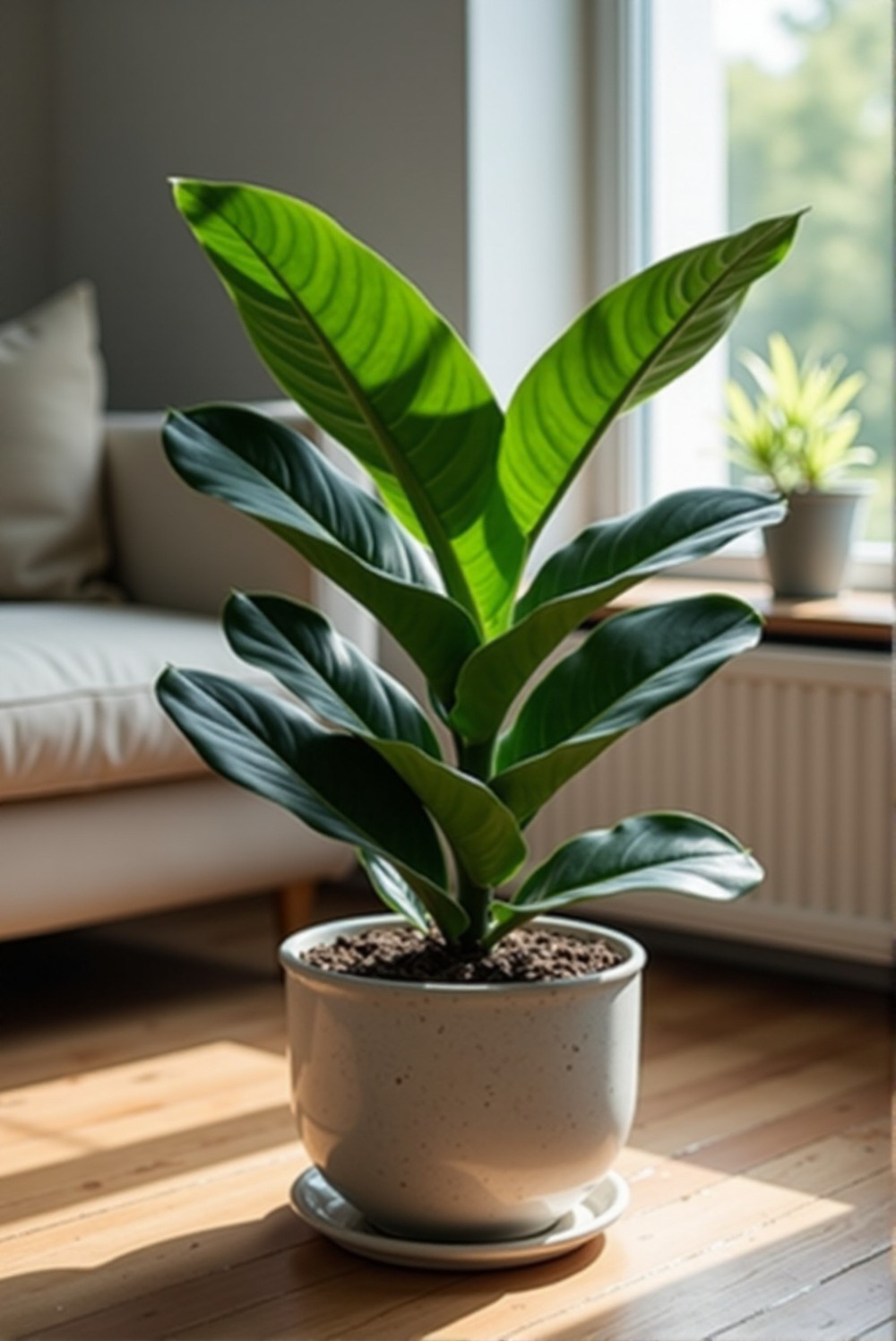
The Rubber Plant is an impressive addition to any home. Its large, glossy leaves can make any room feel more lively and fresh.
This plant, also known as Ficus elastica, is not only beautiful but also fairly easy to care for, making it a popular choice.
For optimal growth, a Rubber Plant thrives in bright, indirect light.
However, it can adapt to lower light conditions if needed. Too much direct sunlight can scorch its leaves, so be cautious about placement.
Watering should be done when the top inch of soil feels dry. It’s important not to overwater, as soggy soil can harm the roots.
During the growing season, a balanced fertilizer every few weeks will help boost its growth and keep it healthy.
Beyond its aesthetic appeal, the Rubber Plant is known for its air-purifying qualities.
It can help eliminate harmful toxins from the air, contributing to a better indoor atmosphere.
With its potential to grow quite tall, it can become a stunning focal point in your living space.
Its deep green color adds depth to your decor and complements a variety of styles.
In addition to its beauty and health benefits, the Rubber Plant is relatively low-maintenance.
It can tolerate some neglect, making it a great option for busy individuals who want to enjoy houseplants without a lot of fuss.
For those who lead busy lives but still want to enjoy the beauty of houseplants, this resilient plant is an excellent choice. Here are some features that make it particularly suitable:
- Requires minimal watering, allowing for longer periods between care.
- Tolerates various indoor conditions, including low light and temperature fluctuations.
- Resistant to common pests, reducing the need for constant monitoring.
- Adaptable to different potting situations, from decorative pots to functional planters.
- Offers air-purifying qualities, enhancing indoor air quality without much effort.
8. Monstera Deliciosa
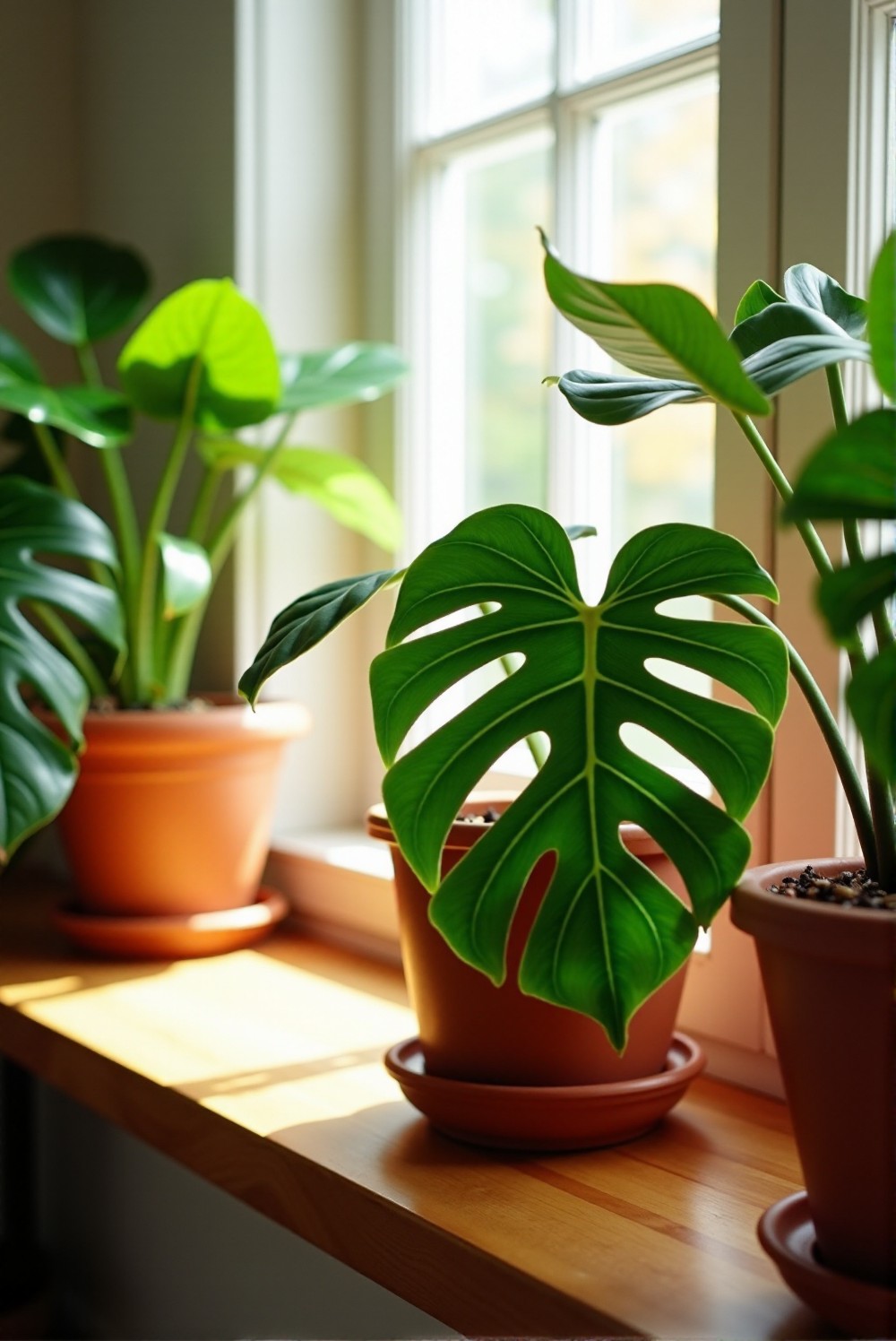
Monstera Deliciosa, often known as the Swiss cheese plant, is a favorite among houseplant lovers. Its large, vibrant leaves are known for their unique holes and splits, which make them visually stunning.
This plant can grow quite large, making it a striking centerpiece in any room.
Monstera enjoys bright, indirect sunlight, although it can tolerate some shade.
Too much direct sunlight can scorch its leaves, so finding the right spot is key. It also likes a warm, humid environment, which is why it does well in households with normal living conditions.
Watering is straightforward; allow the top inch or so of soil to dry out before adding more water. In the growing season, usually during spring and summer, it’s helpful to fertilize every month to promote healthy growth.
Proper watering and fertilization are essential for maintaining plant health and encouraging growth. Here are some additional tips to follow:
- Ensure good drainage in the pot to avoid overwatering.
- Use a balanced fertilizer during the growing season for optimal results.
- Monitor for signs of stress in the plant, such as wilting or yellowing leaves.
- Adjust watering frequency based on changes in temperature and humidity.
- Consider using organic fertilizers for a more natural approach to feeding your plants.
One of the best things about Monstera is its ability to purify air. It can help filter out harmful toxins, improving your home’s air quality.
This makes it not only a lovely decoration but also a beneficial one.
As your Monstera grows, it may develop aerial roots.
These roots can grab onto nearby structures and help the plant climb, mimicking its natural habitat. If you want to support this growth, provide a trellis or moss pole for added support.
Overall, Monstera Deliciosa adds a touch of tropical flair to your space. With the right care, it can become a lush and lively addition to your home, enhancing your interior decor beautifully.
9. Fiddle Leaf Fig
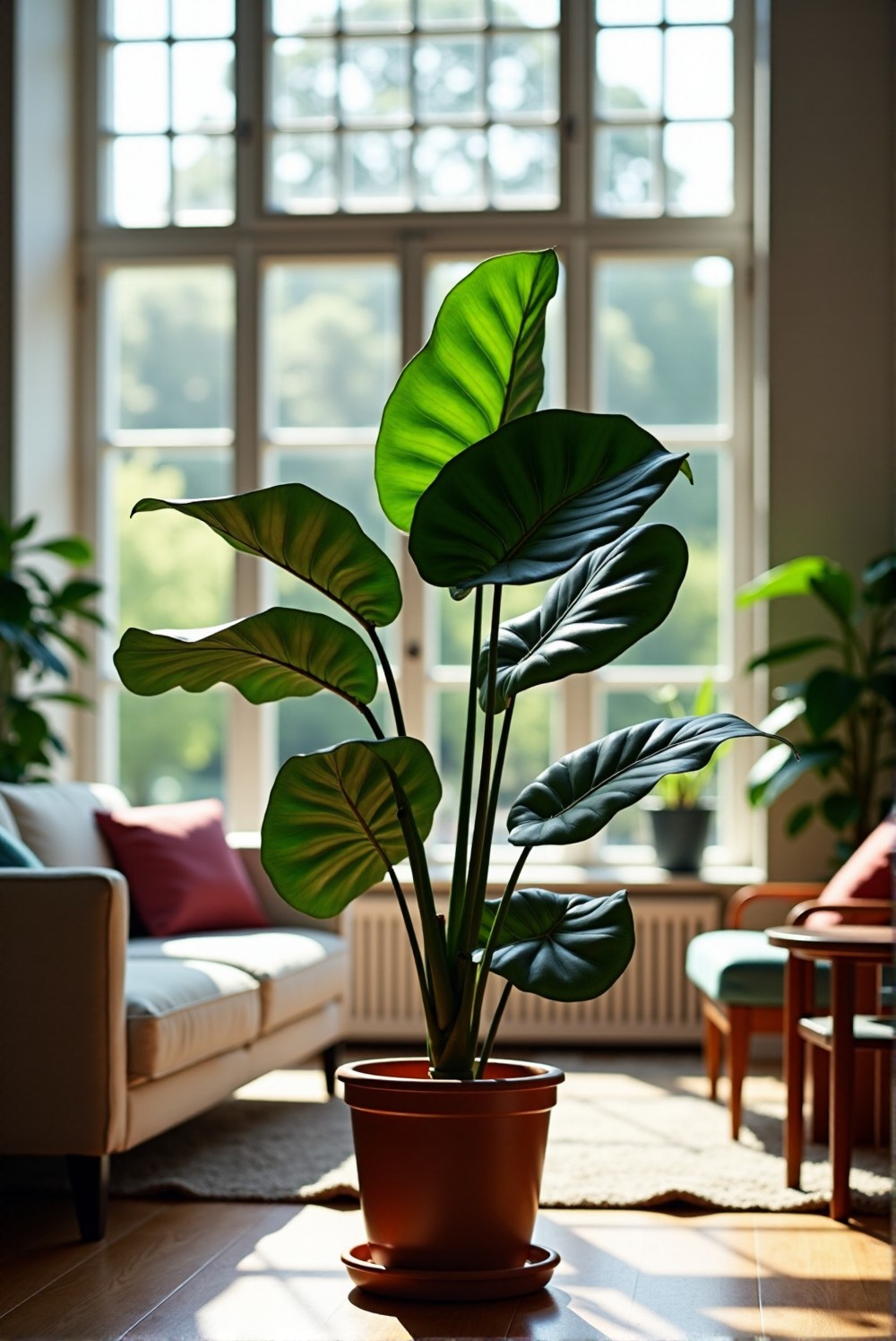
The Fiddle Leaf Fig is a standout option for indoor spaces. This plant features large, violin-shaped leaves that can grow quite big, adding a bold touch to your home.
It can reach heights of up to 10 feet when properly cared for, making it a commanding presence in any room.
For the best results, place your Fiddle Leaf Fig in bright, indirect sunlight.
Too much direct light can harm its leaves, while too little can prevent it from growing well. It’s essential to rotate your plant occasionally to ensure even light exposure, helping all sides thrive.
Watering is another crucial aspect of Fiddle Leaf Fig care. Allow the top inch of the soil to dry out between watering.
This plant prefers to be on the drier side rather than too wet. Overwatering can lead to root rot, so be cautious.
This plant is known for its air-purifying qualities, helping to clean the air and improve indoor air quality. With proper care, it can not only beautify your space but also contribute to a healthier environment.
Occasionally, check for pests like spider mites or mealybugs. Preventative measures, such as keeping the leaves clean, can minimize these issues.
Wiping the leaves with a damp cloth will keep them dust-free and enhance photosynthesis.
With a bit of attention, the Fiddle Leaf Fig can become a cherished part of your home, providing beauty and life to any space.
10. Dracaena
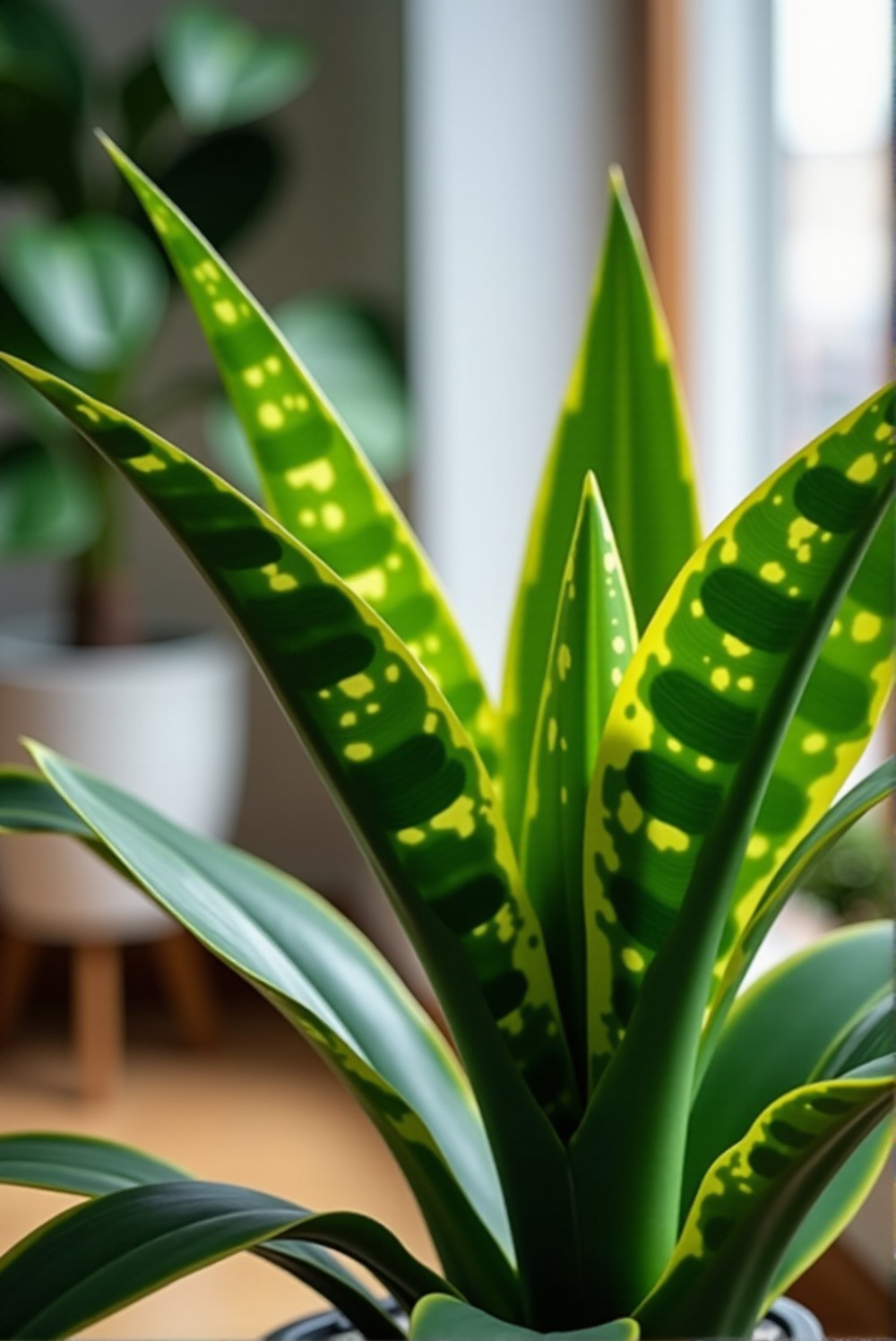
The Dracaena is a stunning houseplant that adds a touch of elegance wherever it is placed. With its long, arching leaves that come in various colors and patterns, this plant is sure to catch the eye.
Dracaenas are appreciated for their ability to thrive in a range of light conditions, from low light to bright, indirect sunlight.
They prefer well-draining soil and should be watered when the top inch of the soil feels dry.
It’s important not to let them sit in water, as this can lead to root rot. During the growing season, applying a balanced fertilizer every month will help promote healthy growth.
This plant is also known for its air-purifying abilities, making it a great addition to improve indoor air quality. Regularly dusting the leaves ensures they can absorb light efficiently and continue to thrive.
Dracaenas are quite versatile and can adapt to different indoor settings, whether placed in homes or offices. Their unique shapes and lush foliage can enhance the decor of any room.
With proper care, a Dracaena can grow tall and become a beautiful focal point in your space.
Another great feature of the Dracaena is its resilience.
They are generally low-maintenance plants, making them ideal for those who may not have a lot of time to devote to plant care. Their robustness, combined with their striking appearance, makes them a favored choice among plant enthusiasts.
Frequently Asked Questions
Here are some frequently asked questions about charming house plants that can brighten your space.
What are the best house plants for low light conditions?
Several house plants thrive in low light conditions, making them ideal for homes and offices with limited sunlight.
The Peace Lily and Snake Plant are excellent choices, as they can flourish with minimal direct light.
Both plants not only survive but also contribute to improving indoor air quality, making them perfect for beginner plant parents.
How often should I water my house plants?
Watering frequency can vary depending on the type of plant and its environmental conditions.
Generally, it’s best to check the top inch of the soil; if it feels dry, it’s time to water.
Overwatering is a common mistake, so ensure the pot has drainage holes and that the plant does not sit in water.
What are the benefits of having house plants?
House plants provide numerous benefits, including enhancing indoor air quality by filtering out toxins.
They can also boost mood and improve concentration due to their calming and aesthetic presence.
Additionally, certain plants can increase humidity, which promotes better respiratory health.
Are there house plants that are safe for pets?
Yes, some house plants are safe for pets, such as the Spider Plant and Bamboo Palm.
These plants do not contain toxic substances that could harm cats or dogs, making them suitable for pet owners.
However, it’s always good practice to research any new plant before bringing it into a pet-friendly environment.
What should I do if my plant’s leaves are turning yellow?
Yellowing leaves can indicate various issues, typically related to watering practices or light conditions.
Check if you are overwatering or underwatering; both can lead to stress and yellow leaves.
Also, ensure that the plant is receiving the right amount of light, as insufficient light can also cause leaves to turn yellow.
How can I propagate my house plants?
Many house plants can be easily propagated, allowing you to grow new plants from existing ones.
For instance, Spider Plants produce “baby” plantlets that can be rooted in soil or water.
Additionally, some plants, like Pothos, can be propagated by cutting stem sections with a few leaves and placing them in water until roots develop.
Conclusion
Adding house plants to your space can truly transform it into a lively oasis. Whether you choose a Peace Lily, a Snake Plant, or a Monstera, each plant brings a unique charm and offers health benefits by purifying the air.
By selecting the right plant for your environment, you can enjoy a touch of nature in your home. Plus, most of these plants require minimal care, making them perfect for busy lifestyles.
Embrace the joy of plant parenting and watch your indoor space flourish!